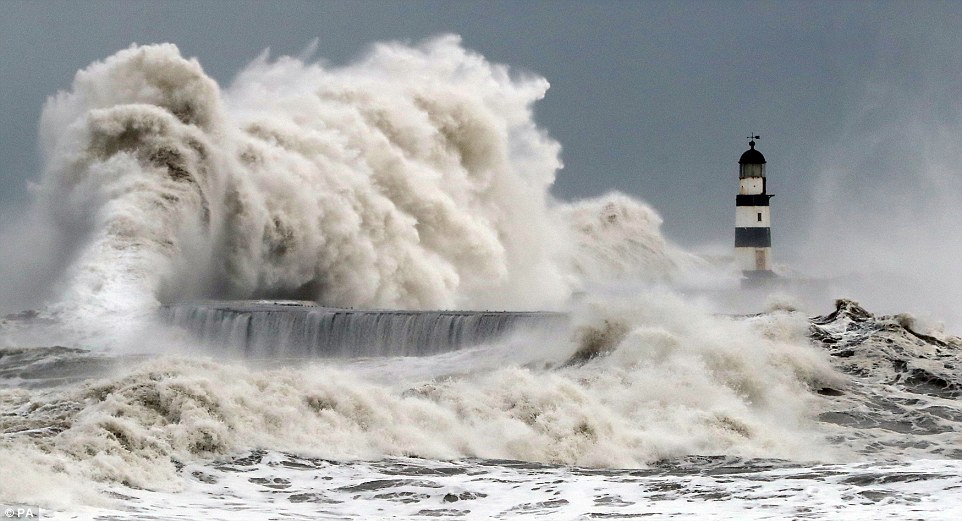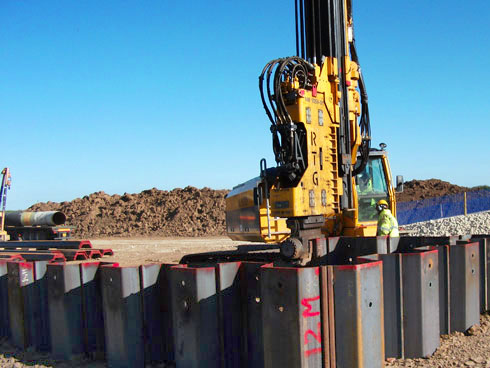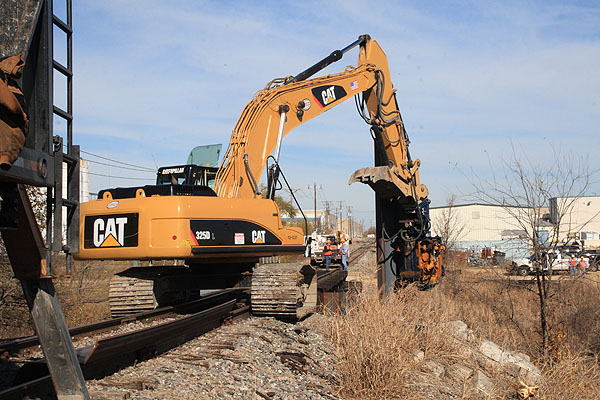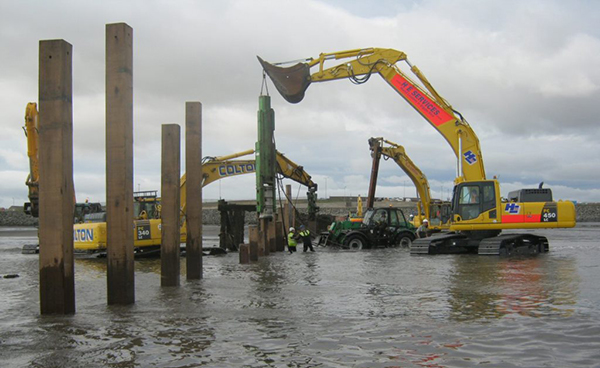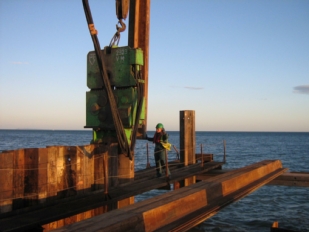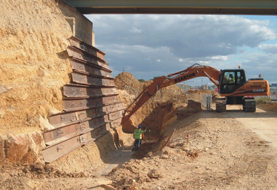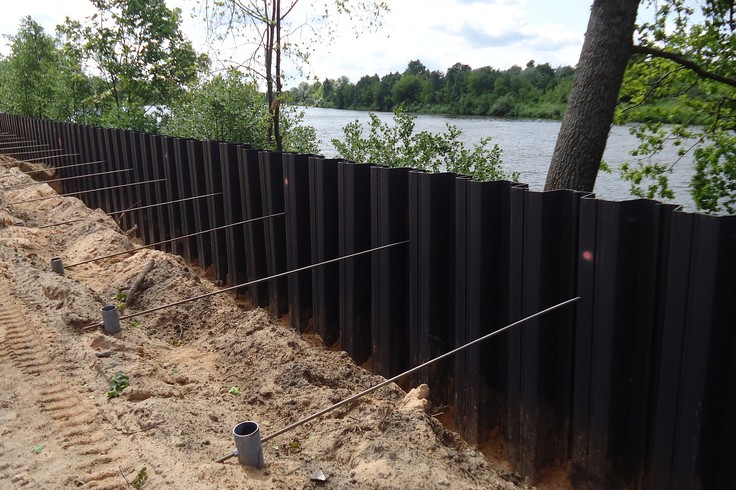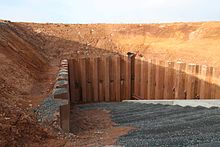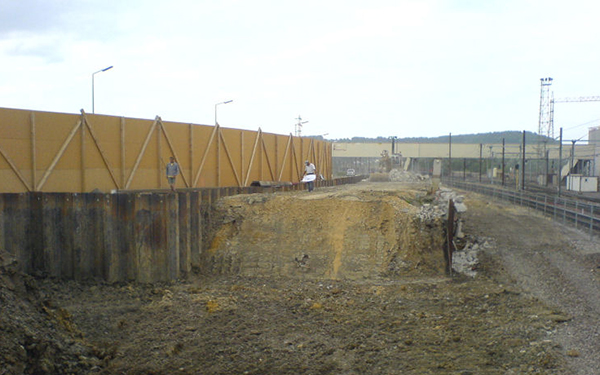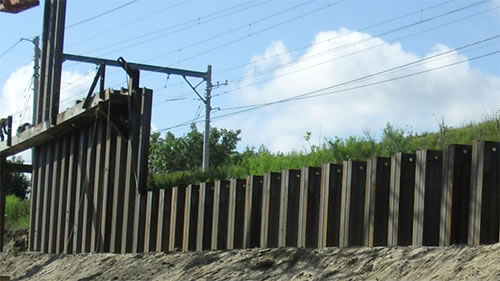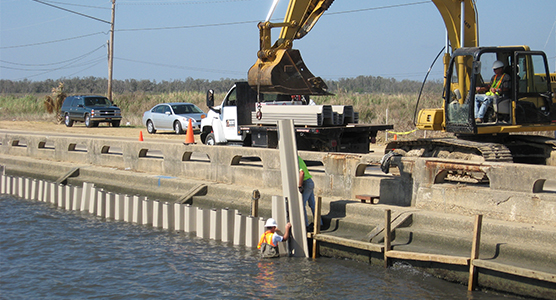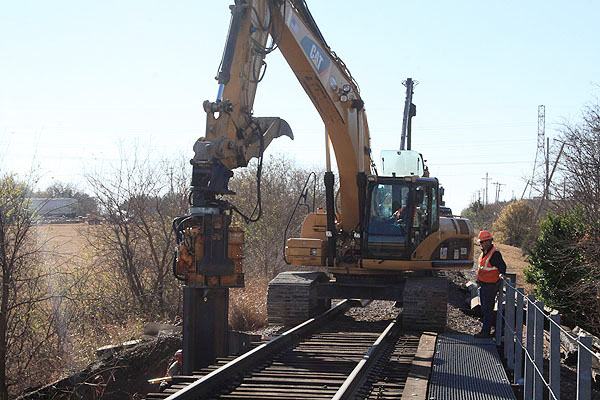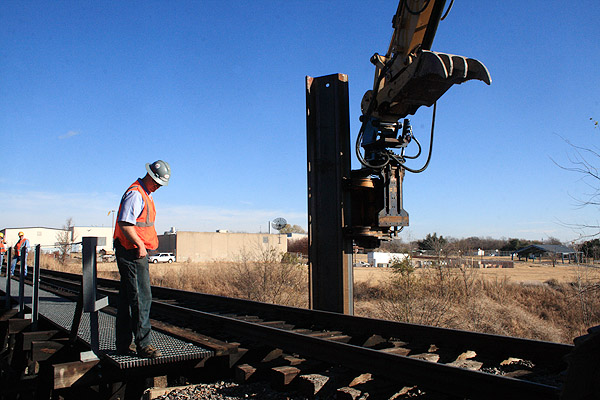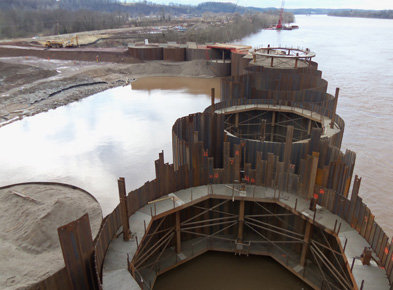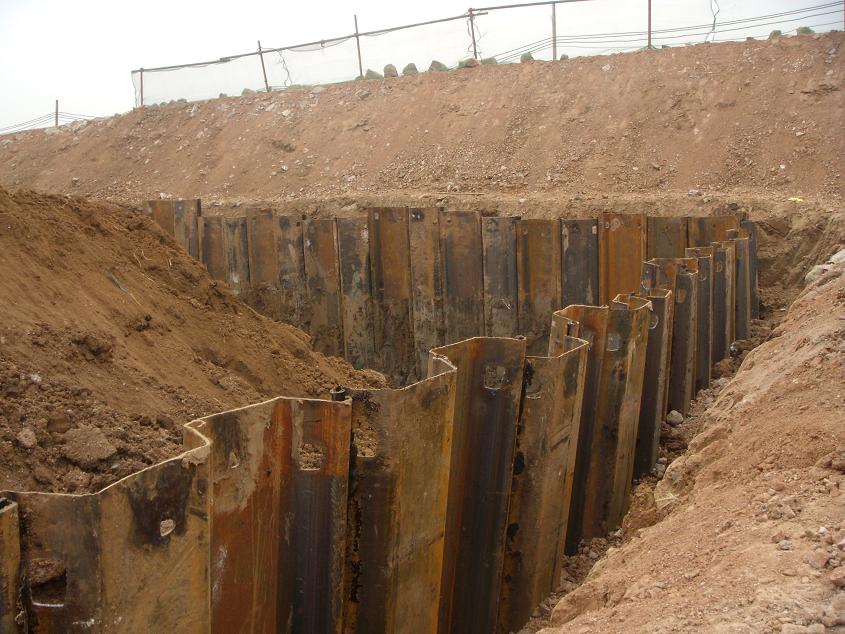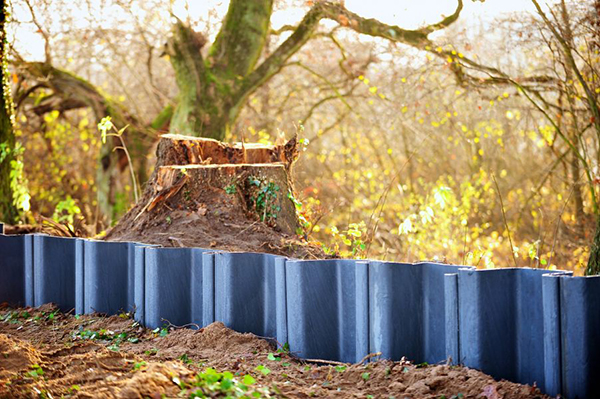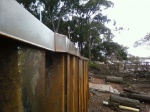419. Innovative of sheet piling
Our innovative equipment and methods of installation, now make sheet piling a more viable option.
418. Introduction of Steel sheet piles
Steel is the most common form of sheet piles as it has good resistance to high driving stresses, excellent water-tightness, and can be increased in length either by welding or bolting.
417. Advantages of Vinyl Sheet Piling
Vinyl sheet piling is resistant to biological corrosion, rust, cracking, scratching, abrasion, seawater, damaging UV radiation.
416. Sheet Pile of Excavator Mounted Vibrator
A new multi-piling system, especially designed to be mounted to a excavator, is revolutionising a Queensland sheet pile and earthmoving company.
415. Sheet piling of flood wall
Sheet piling is commonly used in projects designed to stabilize and raise the height of levees and earthen dams.
414. Sheet piles in marine construction
Sheet piles can support excavations for a variety of below grade structures and can be particularly useful for marine construction such as seawalls and bulkheads.
413. Sheet Piles for shoring temporary or permanent applications
Our sheet pile is available in a variety of lengths and profiles and is available with overlapping or interlocking designs.
412. SHEET PILE RANGE - COLD FORMED
The innovative of sheet piles have been manufactured to be wider, stronger and lighter than traditional Type Sheet Piles.
411. Permanent Sheet Piles Basements
We own and operate a comprehensive range of specialist sheet piles equipment, ranging from conventional percussive hammers, through the full range of vibratory hammers (including the very latest variable moment vibrators), through to "state of the art" Silent Vibration Free Hydraulic pile jacking equipment.
410. Structures of Cantilever Sheet Pile Wall
The various forces acting on a cantilever sheet pile wall are the active earth pressure on the back of the wall and the passive earth pressure on the front of the wall.
409. Z-shaped sheet piling
Hence, it would be useful to provide a Z-shaped sheet piling in which the cross-sections are designed so as to resist transverse stresses.
408. Seawall Sheet Piling
Permanent retaining walls utilising sheet piling are used on schemes large and small, from simple projects to complex slope stabilisation solutions.
407. Design of sheet piles installation by vibration
In The Netherlands 70% of the sheet piles are installed with vibrators. This is because vibrators have a high production rate and therefore a low installation cost.
406. Excavation sheet piles walls
Excavation sheet piles walls are usually installed in horizontal sections with sheet piles or H piles and wood timbers and whalers.
405. Sheet Piling Equipment
All sheet piling products are well designed, robust and durable, developed by a team of innovative engineers committed to innovation and developing products that perform in all conditions to give you a real competitive edge on your sheet piling project.
404. Sheet pile construction method Classification
This is the drive for use in sheet pile reaction force through the middle portion of the clamp is a sheet pile construction technique by sheet pile into the ground.
403. Sheet piles retains soil with interlocking edges
Sheet piles walls have been used to support excavations for below-grade parking structures, basements, pump houses, and foundations, to construct cofferdams, and to construct seawalls and bulkheads.
402. Advantages of Composite Sheet Piles
The composite sheet piles are a breakthrough innovation in the civil engineering industry. Made of vinyl polyester or ester reinforced with fiber glass, the composite sheet piles offer all the advantages of composite sheet piles, combined with reinforced strength and durability.
401. PVC Sheet Pile
Window grade PVC is recognised as the best polymer for extruding into sheet pile as it has far superior qualities in terms of UV stability and impact resistance.
400. Sheet Piles – Installation And Removal
Sheet piles are a type of driven pile where thin interlocking sheets of steel are hammered into the ground to form a continuous barrier.


